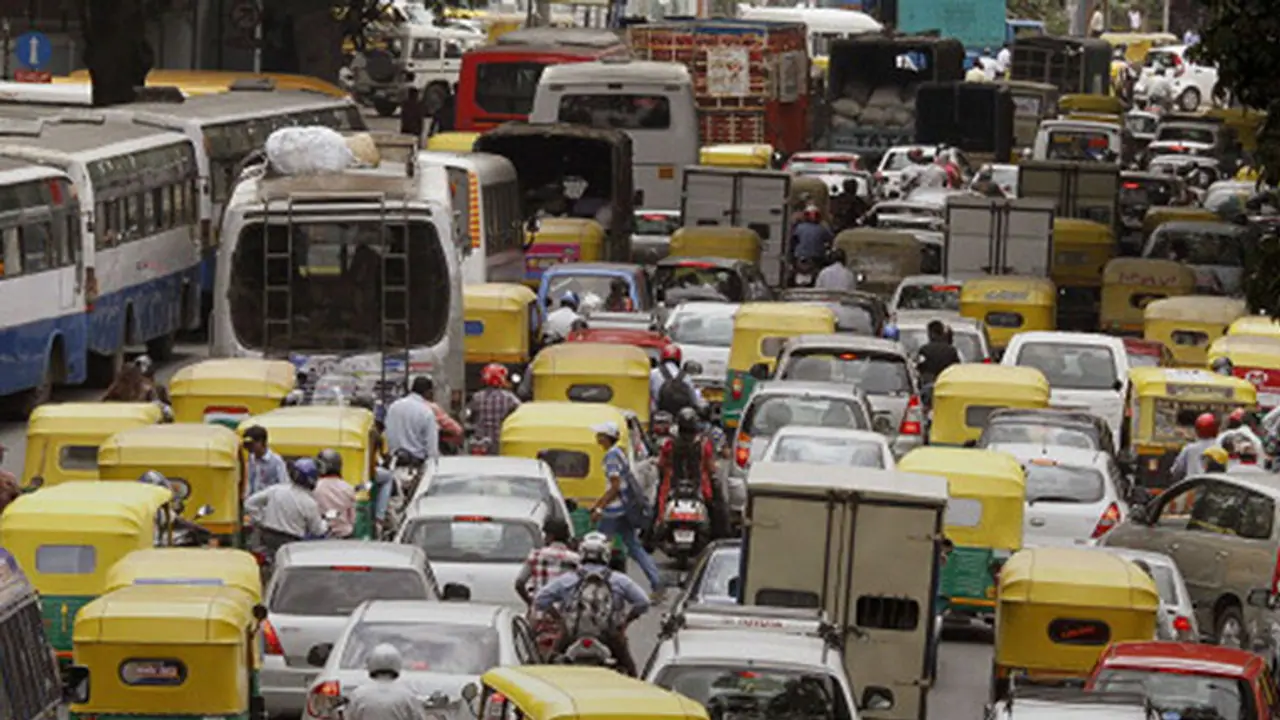Bengaluru is heading towards a catastrophe when it comes to traffic. On average, the 66 lakh vehicles on the road take 1.5 hours to cross ten kilometres. Experts suggest drastic measures to bring the situation under control.
Traffic in Bengaluru is a nightmare. And while that line may apply to almost any major metro in India, for the IT capital, the phrase holds special value. In a city where 'smart' solutions are a dime a dozen, the inability of the authorities to solve the ever-growing traffic crisis has been a bitter bone of contention.

On average, a Bengalurean will take close to 1.5 hours to travel ten kilometres within the city. At that rate, one is essentially immobile for large parts of the travel.
Read more: Bengaluru’s traffic woes: When the city missed the bus on BRTS
According to a report by the Karnataka Transport Department, Bengaluru has 66.34 lakh vehicles. Of these, 72 percent are two wheelers, 12 percent are cars, six percent are buses, seven percent are lorries and trucks and rest is divided between autos and other vehicles.
Urban and mobility experts and officials from the transport department have raised strong concerns about the city's roads.
"With these many vehicles already on our roads, 1,250 new vehicles are being registered every day. The travel time per ten km in peak hours has increased from 45 minutes to 1.5 hours. It is becoming very difficult for the city roads take more load," said Narayanswamy, Additional Commissioner of Transport.
Read more: Six reasons why BDA’s new Master Plan 2031 may fail
According to mobility expert Dr Ashish Verma, Associate Professor, Department of Civil Engineering, Indian Institute of Science, the city is heading towards a major catastrophe in the next few years if the transport department fails to take up a firm decision like China.
In China, a lottery system allots cars to kerb registrations. In few a cities, motored two wheelers are banned.
In the IISC study 'Úrban Mobility Trends in India and Other BRIC Countries And Their Policy Implications', developing countries such as the BRIC (Brazil, Russia, India, and China) are currently witnessing a phase of rapid economic development which has affected people’s mobility choices and behaviour.
"The study indicates that car ownership doubles every five years per 1000 population. At present, 160 people own cars per 1000 population. It is time to bring in a change in policies before the situation goes out of control," Dr Verma said.
Read More: It is dangerous to be a traffic cop in Bengaluru!
MN Shreehari, a traffic expert held the Urban Planning Department responsible for such a situation.
"It will take over 3 hours to travel ten km in peak hours a few years from now. At present, walking is faster in areas like BTM Layout, Silk Board Junction and Yeshwanthpur compared to a vehicle's speed. In these places, the speed level has come down to 4.48 km per hour compared to 10 km per hour by humans," said Shreehari.
There is blame on the civic agencies as well. Their failure to crack down on houses that park vehicles outside their homes, owners who park on roadsides and the footpath adds to the traffic mess.
Is Bengaluru going to get its act together before there is a complete breakdown?
